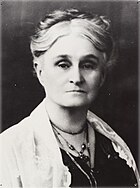

Women's suffrage in Australia was one of the early achievements of Australian democracy. Following the progressive establishment of male suffrage in the Australian colonies from the 1840s to the 1890s, an organised push for women's enfranchisement gathered momentum from the 1880s, and began to be legislated from the 1890s. South Australian women achieved the right to vote and to stand for office in 1895,[1] following the world first Constitutional Amendment (Adult Suffrage) Act 1894 which gained royal assent the following year. This preceded even universal male suffrage in Tasmania. Western Australia granted women the right to vote from 1899, although with racial restrictions. In 1902, the newly established Australian Parliament passed the Commonwealth Franchise Act 1902, which gave women equal voting rights to men and the right to stand for federal parliament (although excluding almost all non-white people of both sexes).[2] By 1908, the remaining Australian states had legislated for women's suffrage for state elections. Grace Benny was elected as the first female local government councillor in 1919,[3] Edith Cowan the first state Parliamentarian in 1921, Dorothy Tangney the first Senator and Enid Lyons the first Member of the House of Representatives in 1943.
- ^ Museum of Australian Democracy, Old Parliament House. "Constitution (Female Suffrage) Act 1895 (SA)". Documenting a Democracy. Retrieved 26 August 2021.
- ^ corporateName=National Museum of Australia; address=Lawson Crescent, Acton Peninsula. "National Museum of Australia - Franchise Act". www.nma.gov.au. Retrieved 26 July 2024.
{{cite web}}: CS1 maint: multiple names: authors list (link) - ^ Cite error: The named reference
:1was invoked but never defined (see the help page).